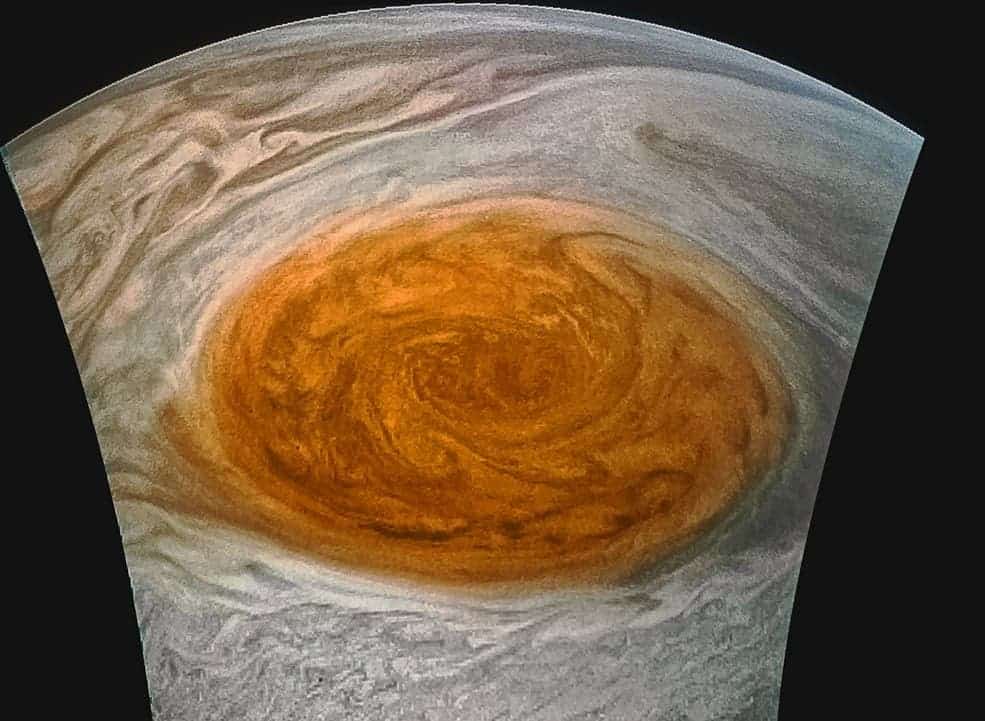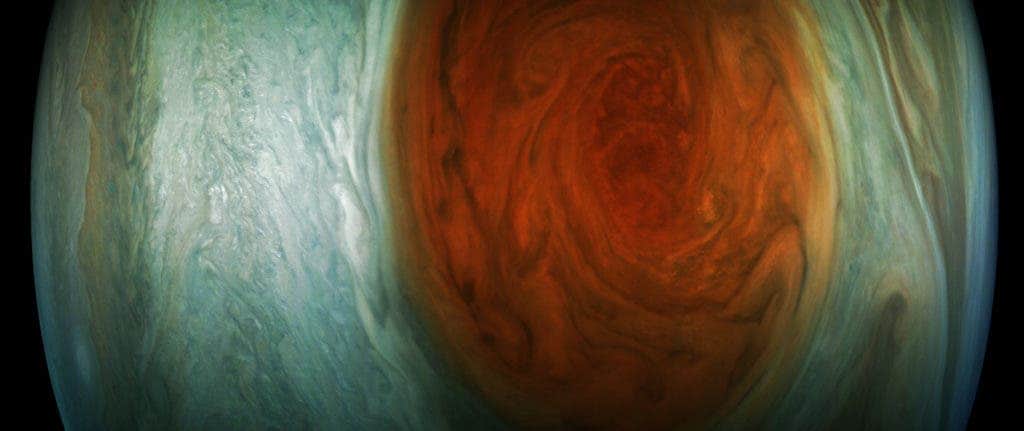Jupiter’s stormy tempest is revealed in unprecedented detail, allowing not only astronomers but also citizen scientists like you or me to view, edit, and analyze the images.

We don’t know for sure when the Great Red Spot emerged but it’s fascinated our imagination since we first laid eyes on it. Astronomers have been continuously studying it since 1830, learning more and more about it as modern equipment started kicking in. It’s basically an anticyclonic storm large enough to fit two or three Earths, constantly generating gravity and acoustic waves which create extremely high temperature. In 1979, as the Voyager 1 passed “by” Jupiter (“by” meaning 9.2 million kilometres / 5.7 million miles from the gas giant), it sent the first detailed pictures of the Red Spot. We learned that the visible, wavy pattern is not only violent and beautiful, it’s also dynamic and incredibly complex. Now, NASA’s Juno mission snapped new pics of this iconic feature, showing it in even more detail.
“For hundreds of years scientists have been observing, wondering and theorizing about Jupiter’s Great Red Spot,” said Scott Bolton, Juno principal investigator from the Southwest Research Institute in San Antonio. “Now we have the best pictures ever of this iconic storm. It will take us some time to analyze all the data from not only JunoCam, but Juno’s eight science instruments, to shed some new light on the past, present and future of the Great Red Spot.”
The Juno mission was launched on August 5, 2011, and it entered Jupiter’s atmosphere almost four years later, in July 2016. Since then, it’s been sending quite a lot of data about the gas giant, including some surprises regarding the difference between the planet’s north and south pole. The brave probe, one of the most ambitious missions in recent years, traveled 2.8 billion kilometers and is now sending colorful, detailed images of this gargantuan phenomenon. The whole world of astronomy issued a collective Wow and it’s easy to understand why.

The flyby was the closest any shuttle has gotten, passing at only 3,500km (2200 miles) above the planet. Again, the probe made it through without a scratch, and has offered enough photos and data for astronomers to study for years to come.
But Jupiter’s Red Spot has more going for it than just good looks. The impressive weather system, whose composition and dynamics is still somewhat of a mystery, could help researchers better understand how weather forms on gas giants, and even other Earth-like planets.
It gets even better. Not only are researchers analyzing the photos, but you can do it too. As the Juno team planned from the get-go, the photos and data are available on the JunoCam website and the mission website to download and analyze — people are already taking advantage of this opportunity. In fact, the photos you see here have been analyzed and edited by citizen scientists, and it’s amazing to see just what a great job regular folk can do. It’s also quite noteworthy that NASA chose to use citizen scientist images in their press releases, given a great deal of support and recognition to these external collaborators.
“I have been following the Juno mission since it launched,” said Jason Major, a JunoCam citizen scientist and a graphic designer from Warwick, Rhode Island. “It is always exciting to see these new raw images of Jupiter as they arrive. But it is even more thrilling to take the raw images and turn them into something that people can appreciate. That is what I live for.”



